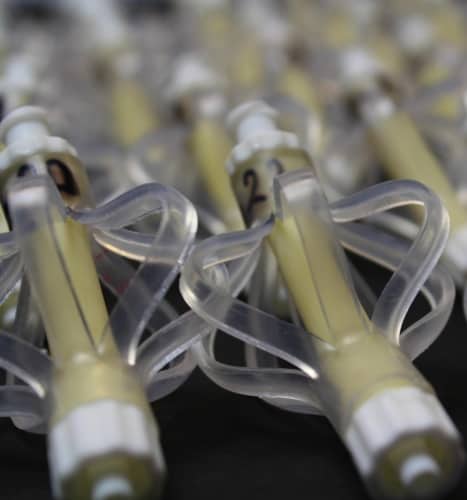Because of their ability to manipulate delicate objects and cope well with unexpected environments so-called soft robots are becoming increasingly widely used. However the fluidic actuators that they relay on to move around are often bulky and require large amounts of air or water, which are typically delivered via a tether.
The Harvard device harnesses a phenomenon in which an innovative arrangement of balloons can be used to trigger rapid changes in shape and size with only small changes in volume.

A paper in the Proceedings of the National Academy of Sciences explains that the actuator was inspired by a physics experiment in which two balloons are inflated to different sizes and connected via a tube and valve.
When the valve is opened, air flows between the balloons. But instead of equalising in size, as one might expect, the larger balloon inflates more while the smaller balloon deflates. This unexpected behaviour comes from the balloons’ non-linear relationship between pressure and volume, meaning that an increase in volume doesn’t necessarily increase the pressure.
“Similar to the balloons, in our research we connect fluidic segments in such a way that an interplay between their non-linear response results in unexpected behavior,” said Johannes Overvelde, one of the authors of the paper. “Certain combinations of these interconnected segments can result in fast moving instabilities with negligible change in volume.”
These fast-moving instabilities, called snap-through instabilities, trigger large changes in internal pressure, extension, shape, and exerted force, with only small changes in volume.
In order to understand how these instabilities could be controlled the team built and inflated 36 individual segments with water, and measured how they responded. Then, using a complex computer algorithm, they determined the responses of all possible combinations of the segments.
A total of 630 possible actuators could be assembled from two segments, each with a different combined response. Some of the combinations showed instabilities, others did not. The team selected the preferred response for a specific application. One combination, for example, would lead to a sudden increase in actuator length, moving it like a worm. Another combination would quickly transfer all volume from one segment to another.
These quick movements could be triggered with small amounts of volume. For example, 1ml of water triggered a snap-through instability that resulted in an internal volume flow of 20ml.
“The beauty of these individual segments is that they are easy and cheap to fabricate from off-the-shelve materials. Yet, when you connect segments you get soft actuators with very complex behavior,” Overvelde said in a statement. “By connecting multiple segments, you can embed a simple program in the actuator that is able to perform a complex sequence of local inflation and deflation.”




Report highlights significant impact of manufacturing on UK economy
I am not convinced that the High Value Manufacturing Centres do anything to improve the manufacturing processes - more to help produce products (using...